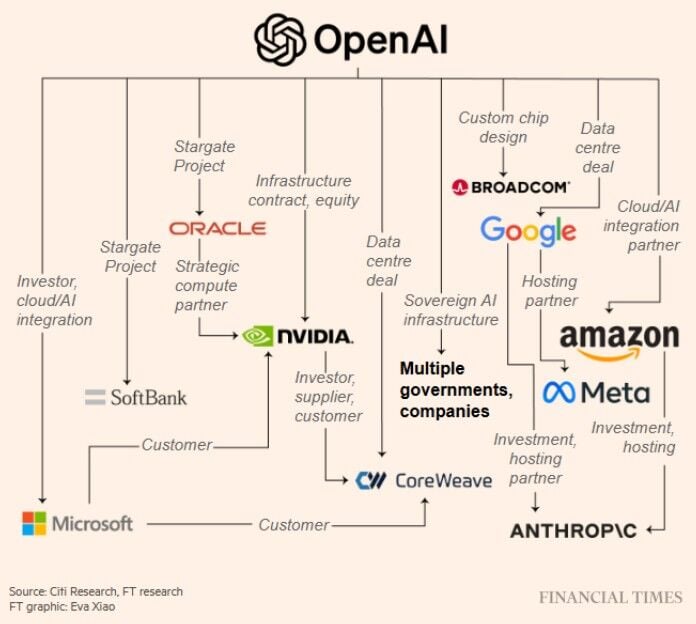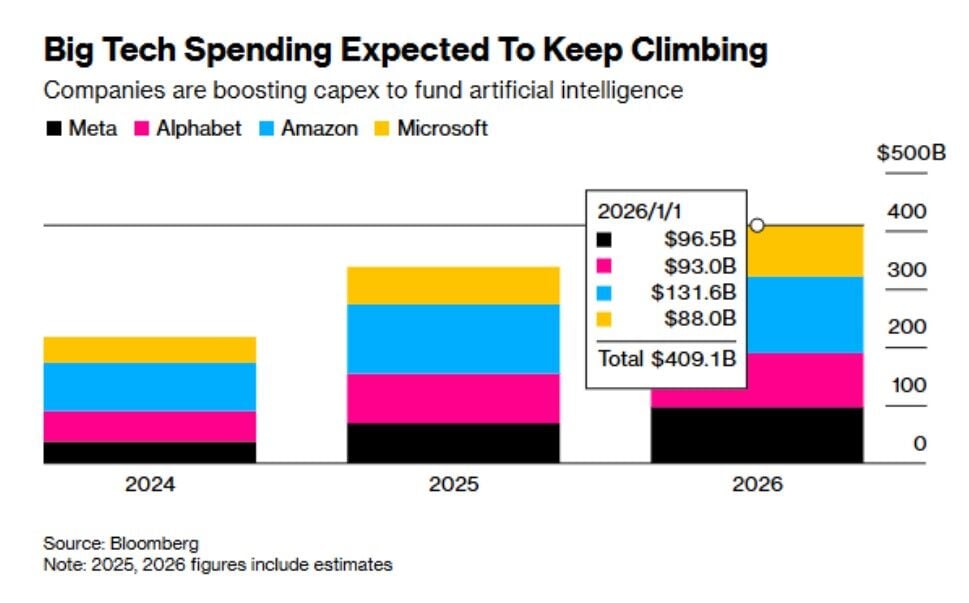
The strength of AI, of generative artificial intelligence, is a two-sided coin. And what has revived to maximum and revived companies tech which had been left behind in this field with exponential increases from the hell of tariffs and problems with China, now appears, in its positive aspect, as a howitzer in the face of the mere announcement of multimillion-dollar investments.
But, it also turns into a nightmare when investors begin to think that they are overbought or that the securities have already been discounted in priceat best, or at worst, pointing out that the immense sums of investment may ultimately not materialize.
Beyond the simple bubble, in which a good part of the market agrees that, at least, it is not even remotely similar to that of the dotcoms due to the market moment that some companies were experiencing, We wonder, without this rain of money, it can continue to boost the main values in the sector. And of course without counting on the problems between the US and China escalating and affecting them.


Bank of America puts on the table that it continues to trust three of the most important companies in the sector that have just announced this type of agreements. The first of them is the largest, NVIDIA.
All this while just a few days ago Its CEO, Jensen Huang, said demand has increased tremendously this year as AI models develop beyond answering simple questions to complex reasoning.
And indicating that demand is very high in the case of its latest generation Blackwell chip, while considering that what is happening is «the beginning of a new expansion, the beginning of a new industrial revolution.»
For BofA, NVIDIA is a purchase, while the mega investment of 100 billion planned in the data centers that ChatGPT’s ‘mother’, OpenAI, will build, 10 gigawatts with its chips, «does not mean that the company is giving away ‘free’ money or GPUs. For every 10% or $10 billion that Nvidia deploys, OpenAI will have to secure data center space first, a gigawatt of reliable power and a total investment of between 50,000 and 60,000 million of dollars for deployment in infrastructure.
And he goes on to indicate that «then Nvidia will bring in $10 billion and will not only take $30-40 billion in sales from OpenAI’s $50-$60 billion in capital expenditures, but also will obtain a shareholding in the company, and this process will continue up to 10 GW.»
This is what the firm considers, a force multiplier, but not a zero-return investment decided nor will it fall on deaf ears for the first company on the market.


BofA’s target price for NVDA is $235 per share, based on a P/E of 37x estimated earnings for 2026. (ex cash), intermediate level within its historical range. The entity justifies this assessment by Nvidia’s leadership in the computing and networking markets for AI, although it warns of risks linked to the volatility of the gaming market, the possible slowdown of large artificial intelligence projects, restrictions on exports to China and possible regulatory scrutiny due to its dominant position in AI chips.
This is how BofA responds to investment concerns, also looking at Advanced Micro Devices, AMD and Broadcom on which it repeats purchases, given the circularity of investments between suppliers and clients, without real added economic value.
«The perception/image is negative – they point out from Bank of America – and evokes unpleasant memories of the billions in supplier financing and the favorable payment conditions of telecommunications equipment suppliers during the dotcom boom and subsequent bust in calendar year 2000,» the American bank adds.
All this while considering that «the success of AI has little to do with supplier financing and, in our opinion, depends much more on the practical pace of data center construction and reliable access to public services (electricity, water)«.


And not only does it look at the money involved, but also that the commitment to deploy up to 250 GW of computing capacity by 2033 is the universe in which they represent only a minimal amount.the 10GW committed to Nvidia or the 6 GW of AMD. Although they also indicate that we will have to be attentive to how many gigawatts are finally deployed, because those, if completed, only represent 6% of those planned in the next 8 years by the creator of ChatGPT.
But not only in its capacity in the data centers, but Nvidia’s 100,000 million and they represent it, despite being a figure that now seems astronomical to us. The annual spending model established by Bank of America reaches 1.2 trillion annually until 2030indicating cumulative fiscal spending between 2026 and 2030, so Nvidia’s amount «pales compared to the overall budgeted spending.»